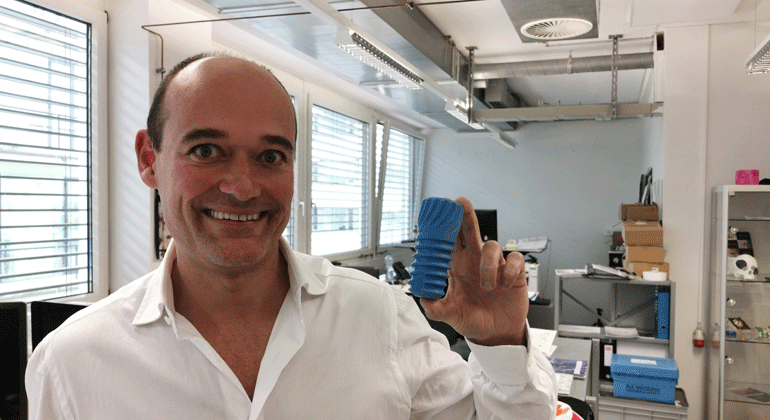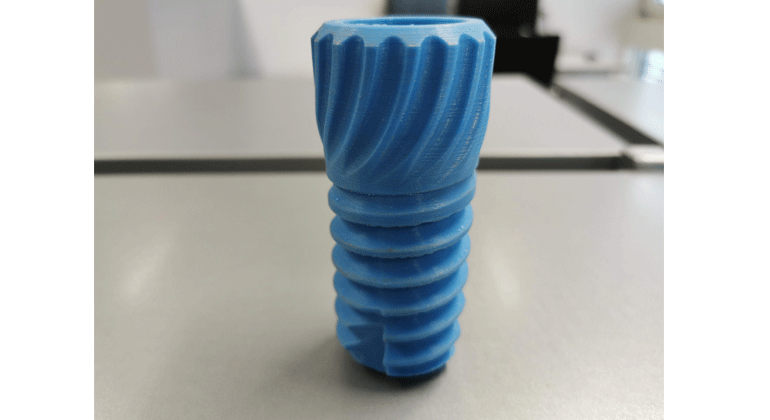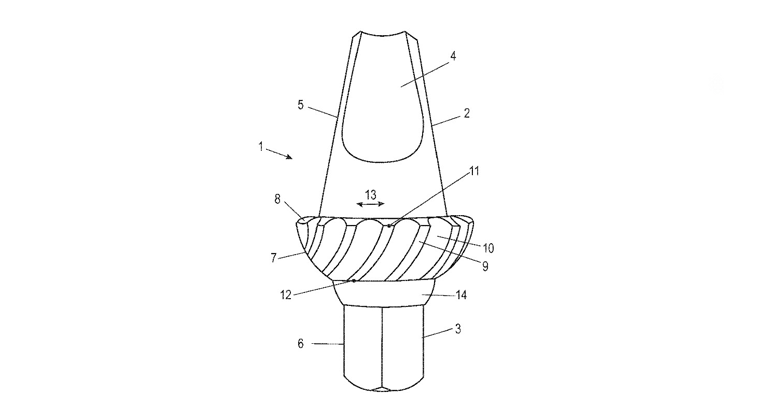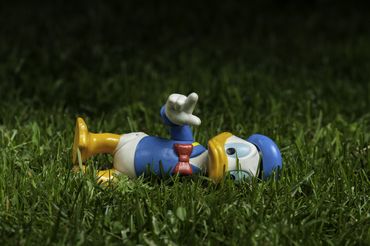In an industrial park in Allschwil, PD Dr. Stefan Stübinger welcomes visitors to the lab of the University of Basel’s Department of Biomedical Engineering. There are two researchers working in the background. The dentist has been working on his invention here for months. Born in Munich, he has been working in Switzerland for two years.
For IP professionals
This is the portal for professionals working in the field of intellectual property. Here you'll find direct access to all necessary resources.
Quick links
A dental implant inspired by seashells
Seashells inspired a dental surgeon to rethink the design of implants. The story of an idea that resulted in both a patent and a start-up.

The problem – bone loss caused by implants
Dr. Stübinger specialises in dental implants. The concept – an artificial root which looks like a classic screw is inserted into the jaw bone. A crown is then placed on top. “The problem is that, over time, the bone recedes from the implant”, says Stefan Stübinger, showing us an x-ray image. He explains that this creates room for bacteria and shortens the life span of the implant. This is one of dentistry’s unsolved problems and Stefan Stübinger had been looking for a solution for a long time. There was no sign of a breakthrough – until he read a magazine.
The solution – an implant with alternative windings
Dr. Stübinger found the key clue in an article on the discovery of a Mayan mummy. Some of the mummy’s teeth had been replaced using pieces of seashell. This meant that the tooth gaps were filled and the shell grew into the bone. “What was fascinating was that there was no recognisable bone loss around the shell”, says Stefan Stübinger.
This led him to reconsider the implant thread and the result is a prototype with two structures. The lower part of the implant contains windings to fix the screw and the upper part has a grooved structure similar to a seashell. This allows the bone to grow upwards. The open structure allows for optimal cleaning.
The screw thread is the physical barrier to the bone – it prevents it from growing upwards. The supply of nutrients to this area is too small to encourage bone growth. This is should not be the case with the new shell structure.
Assisted Patent Search at the IPI – looking at the implant invention under the microscope
Stefan Stübinger had several questions about his invention. Was his implant new and could it be patented? What patents already exist for implants? The dentist got answers to these questions thanks to an Assisted Patent Search with the Swiss Federal Institute of Intellectual Property (IPI). “We were confident about our invention and the search helped us to identify our options”, says Dr. Stübinger. The search with the patent expert revealed that very few patents could jeopardise his invention. There are many patents in the field of dental implants but most of them relate to the winding structure.
Invention patented – what now?
Armed with the knowledge that his invention could be patented, Dr. Stübinger contacted a patent attorney. Shortly afterwards, a patent application was filed. “The attorney was an expert in our field of dentistry and knew exactly what was needed when formulating the patent specification.” Dr. Stübinger now has two patents for his inventions. These secure him a 20-year monopoly on his invention.
Start-up founded – “I would have run the company into the ground”
Dr. Stübinger and his business partners were sure that they wanted to go down the independent route – a path into a saturated market. Others would think they were crazy for wanting to get involved in this cut-throat market. However, taking the step into self-employment finally paid off for them. The first implants have already been sold in Switzerland. The start-up is called Botticelli, a reference to Sandro Botticelli’s painting “The Birth of Venus”. It depicts the goddess of beauty emerging from a seashell...
Can your idea also be patented? Find out with an Assisted Patent Search.
About the inventor
PD Dr. Stefan Stübinger (43) has a passion for dental surgery. “I never wanted any other type of career. When I was just four years old I used to say, “I’m going to be a dentist,” he recalls with a laugh. Born in Munich, Dr. Stübinger has been working in Basel for a number of years. After completing his dentistry degree, he worked in several different positions. Dental implants became his area of expertise and he carried out fundamental research on the subject in Zurich.





